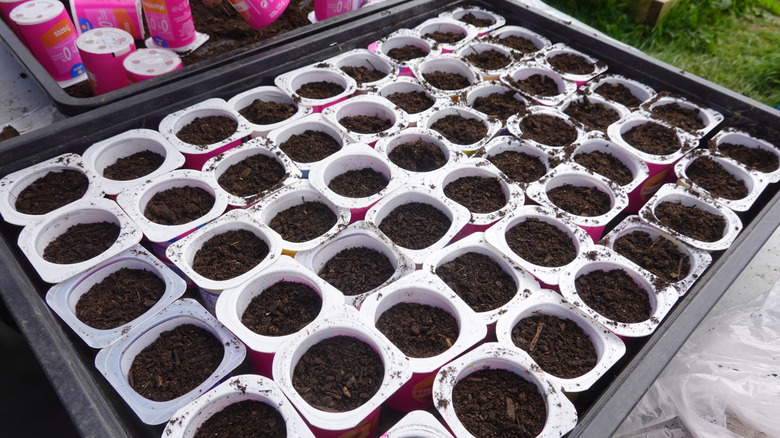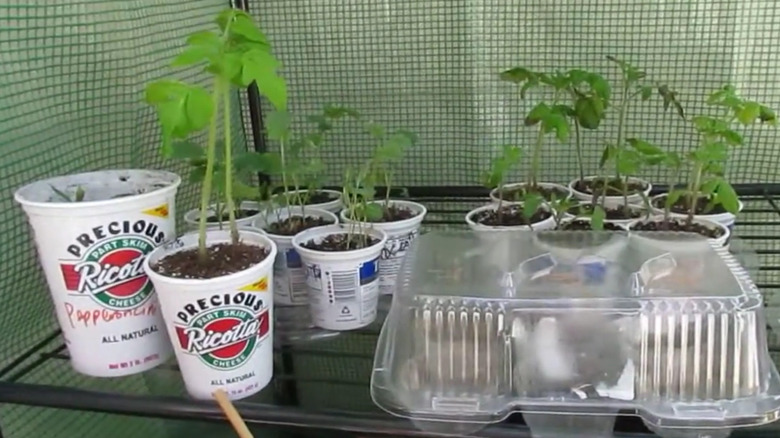Don't Throw Out Empty Yogurt Containers Without Trying A Fun Gardening Hack First
Saving money on a seed starting method is a goal shared by those new to gardening and those who have accumulated too large of a stash of supplies. With so many seed starting trays on the market, in materials ranging from plastic to biodegradable material, it can be confusing to choose the best option, especially if you are not sure what the outcome of your seed sowing will be. But any container that is 2 to 3 inches deep will do, and there is an easy option that will even help you take care of kitchen waste — you can use yogurt containers for a fun gardening hack instead of throwing them away.
Indoor seed starting is a perfect way to reuse yogurt cups, since each cup will give a seedling its own space to grow. It is easiest to transplant your seedlings into larger containers or into the garden if they sprout up individually, and their roots are prevented from tangling together. If you have a surplus of yogurt containers, you can even make plant labels by cutting them horizontally into the cups, and then diagonally to separate the strip you just cut. And it is not just the container that can be helpful. Some of the yogurt can be used as a natural fertilizer in the garden, giving the seeds a head start for healthy growth, and rinsing the aluminum yogurt lid and placing it underneath the cup will help protect the surface it rests on.
Tips for starting seeds in yogurt cups
Prepare for this gardening project by saving enough empty yogurt containers so you can plant one seed in each cup. Make sure you poke holes in the bottom of the cups before planting so the water can drain out, which you can do with a kitchen knife. It is important to check whether your seeds are a good candidate for indoor starting in this type of container. Sowing the seeds of vegetables that grow in warm weather, like tomatoes and peppers, gives them a hardiness boost before they are planted outside after the last frost. There are other seeds you should start indoors ahead of the fall, like broccoli and cabbage, since it can be too hot to start them outdoors in the summer. If you want to grow cucumbers, melons, or squash, the yogurt cup hack is not ideal, since these plants do not do well in the transplanting process.
Moisten and pour soil mixtures labeled "potting mix" or "seed-starting mix" into your yogurt cups rather than using soil straight from the garden. Since planting seeds too far down into the soil is one of the biggest mistakes you can make when starting seeds indoors, keep the seeds close to the surface, not deeper than two times the width of the seed. The clear plastic tops of some types of yogurt containers come in handy after you have planted the seeds, since you can place the tops back on the cups, mimicking the clear domes gardeners use to help the soil retain moisture. It is also good practice to put the cups on a tray to catch the water that will drain out of the holes made in the cups.

